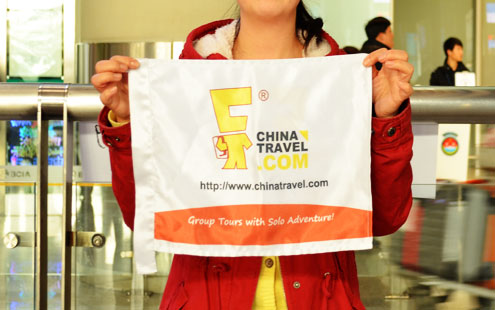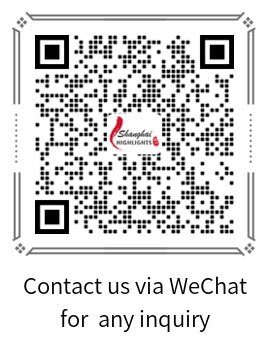Tour Code: xz-2
Departure Date: Daily
Features:  Private Tour Guide
Private Tour Guide  Private Car & Driver
Private Car & Driver  Authentic Local Restaurants
Authentic Local Restaurants
Tibet is an immense area north of China but is home only to about 3 million people. Geographically secluded from much of the outside world due to the high Himalayas, the ancient communities who have lived here for centuries, dispersed from each other have developed customs and traditions unique from each other. The beliefs and teachings of Tibetan Buddhism drive much of daily life, and on this 6 day journey through Lhasa and Gyantse, you will get a taste of the mystical air that continues to attract outside visitors year round.
Welcome to Lhasa, the capital of Tibet! On arrival, we will take you to your hotel where you have the rest of the day to do as you please. Be sure to drink lots of water and rest well in order to settle your body into the high altitude.
 | Tangka Hotel
| Tangka Hotel  | lhasa Tashi Nota hotel
| lhasa Tashi Nota hotel 
Today, you will begin your excursions in Tibet with us. First stop is Sera Monastery, one of the 3 most significant monasteries in Lhasa. There are 4 main structures that comprise the complex, including the Great Assembly Hall (also known as Coqen Hall) and 3 additional colleges. Coqen Hall, constructed in 1710 and home to 5 chapels, is in the northeast area and where many religious rituals are hosted. The debate of Buddhist doctrines is one of the most famous daily activities at Sera Monastery (weekdays only). Each session lasts about 1.5 hours and is a time for the monks to discuss their studies, traditions, and ideas. Those who wish to observe this unique debate event should plan to arrive early and also remember to be respectful and keep quiet during its duration.
Next on your tour will be Norbulingka, a wonderful park and palace complex in Lhasa. It was originally built in 1755 and served as the summer home to the Dalai Lamas from the 1780s until the last Dalai Lama (due to exile) in 1959. The park is a highlight for those who enjoy horticulture, filled with rare plants and fruit trees, and beautiful and vibrant all year round even in winter with its own charms. As well, throughout the year various cultural and ethnic events are held at Norbulingka such as dances, singing, live music shows, and traditional festivals.
Lastly, we will take you to Drepung Monastery after lunch. The practice of Tibetan Buddhism continues strong here, ever since the complex was built in 1416. On any given day, you will see on your visit monks of all ages studying and learning about their faith as well as worshippers who come to pay their respects. Note that August is a particularly worthy time to visit Drepung Monastery because of the annual Shonton Festival, drawing together locals and visitors together for some entertainment!
 | Tangka Hotel
| Tangka Hotel  | lhasa Tashi Nota hotel
| lhasa Tashi Nota hotel 
The greatest of Tibetan palaces will be your first destination this morning. Potala Palace is the highest ancient palace in the world and means "Adobe of the Avalokitesvara (Buddha of Mercy)." Today, visitors will see a magnificent structure that exemplifies the styles of the Tang Dynasty. An intricate maze of corridors, stairs, religious statues, tombs, murals, and antiques provide a peek into this unique religions as well as history itself. The Red Palace stands at the center of the complex, and the White Palace provides 2 wings additionally. The former is used as a space for the study of Buddhism and prayer, full of smaller galleries and passages to divide the large space. On the other hand, the White Palace used to be the administrative center of the local Tibetan government and the Dalai Lama's living area (occupying the 5th and 6th floors). Pilgrims continue to visit in modern times, offering precious items such as silk scarves, coins, yak butter, and more.
Continue with your guide to Jokhang Temple. In many regards, this temple is of the utmost importance for Tibetan Buddhist pilgrims. There are 4 stories to explore, and the gold roof is an iconic aesthetic in the capital and Tibet. The priceless statues, shrines, and other religious relics that can only be found at Jokhang Temple are also highlights; the statue of Sakyamuni at age 12 is especially treasured because it is only 1 of 3 that he allowed to represent his likeness.
You will then visit Barkhor Street after lunch. This area is, rather, an area of many narrow pathways and a public square just next to Jokhang Temple. Barkhor Street is very important to pilgrims and locals because it was the principle walkway leading to the temple, consisting of 1 kilometer in total all around the site. Today, the area is a bustling market where you can find many local, traditional, and interesting souvenirs. Browse shopping areas such as Tromzikhang market or perhaps stop for a drink at a teahouse to experience a special part of Tibetan life and culture.
 | Tangka Hotel
| Tangka Hotel  | lhasa Tashi Nota hotel
| lhasa Tashi Nota hotel 
In the morning, we will receive you at your hotel in Lhasa and take you to Gyantse, the second largeset city in Tibet, about 250 kilometers from Lhasa. On this journey, you will see some breathtaking landscape scenes of rural Tibet.
There are 2 main attractions you will visit today: Yomdrok Lake and Palgor Chorten. Yomdrok Lake is considered one of the 3 largest sacred lakes in the entire region. Yomdrok Lake is surrounded by snowcapped mountains all around, making for incredible views on a clear day. There are about a dozen islands found here, all rich with natural resources, and countless species of water birds call Yomdrok Lake home.
After lunch, you will move on to Palgor Chorten (also known as Palcho Monastery), a monastery that is very different from the ones you'll have already visited in Lhasa due to its architectural style. The styles seen here are a mix of Chinese Han, Tibetan, and Nepalese. About 30 monks live here at what is considered the largest kumbum (or dormitory) in existence with 9 floors total. Also to note are the 108 Buddhist chapels dispersed among several floors. As you walk along the halls and galleries, pay attention to the old mural paintings and sculptures by top artists from the past.
 | Shiga Yangcha Grand Hotel
| Shiga Yangcha Grand Hotel  | Shiga Yangcha Grand Hotel
| Shiga Yangcha Grand Hotel 
In the morning, you will begin your journey back to the capital city.
Along the way, you will stop by Tashilunpo Monastery just outside of Gyantse. This monastery is special for historical and cultural reasons because it is the traditional seat for Pachen Lamas, the 2nd highest ranking leaders in the Gelukpa tradition. Maitreya Temple on the west side is the tallest building in the complex and it hosts a huge and impressive statue of the Maitreya Buddha. The statue was made out of 6,700 ounces of gold and silver and over 115,00 kilograms of copper, making it the largest copper status of its kind in the world. There is also a main chanting hall which has the throne of the Panchen Lama and 2 connected chapels. Lunch will be taken in a local restaurant en route.
 | Tangka Hotel
| Tangka Hotel  | lhasa Tashi Nota hotel
| lhasa Tashi Nota hotel 
Depending on your flight schedule, we will take you back to Lhasa airport as necessary in time for your outbound flight. Thank you for discovering the wonders of Tibet with us!
We use different hotels for different tour classes while the itinerary is the same. Deluxe Class is usually staying at a 5-star hotel, Superior Class at a 4-star hotel and Tourist Class at a 3-star level hotel. The prices for one person are based on sharing twin hotel rooms with another guest. A supplement is necessary if you want to book single rooms. And the prices may rise during national holidays, such as the National Day (September 30th to October 6th) and Chinese New Year (late January or early February)

All of our tour guides are certificated and experienced. They are local experts with detailed knowledge about attractions, history, culture and more. They know the best places to visit, can give you advice on restaurants that serve great local food, the best places to shop, or theaters for the best shows in town.

We use the modern air-conditioned luxury cars for families or 2-3 persons and small buses for small groups of 4-7 persons.
We ensure that all of the vehicles that we use are well-maintained (not over 4 years) and always very clean. Our drivers are very nice and careful with over 5-year drive experience.
Sally Guo
Travel Advisor
